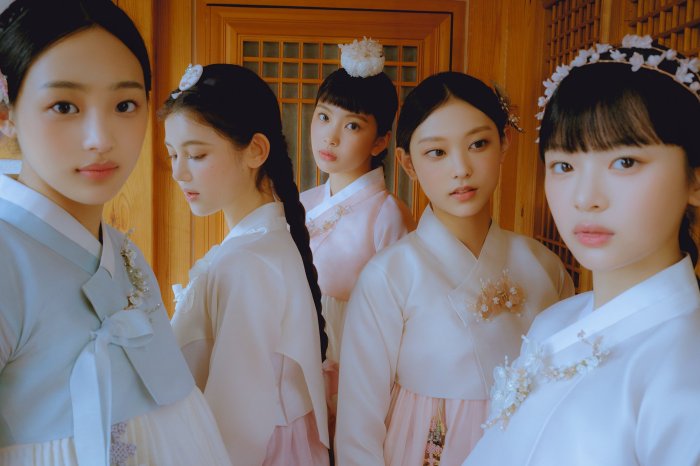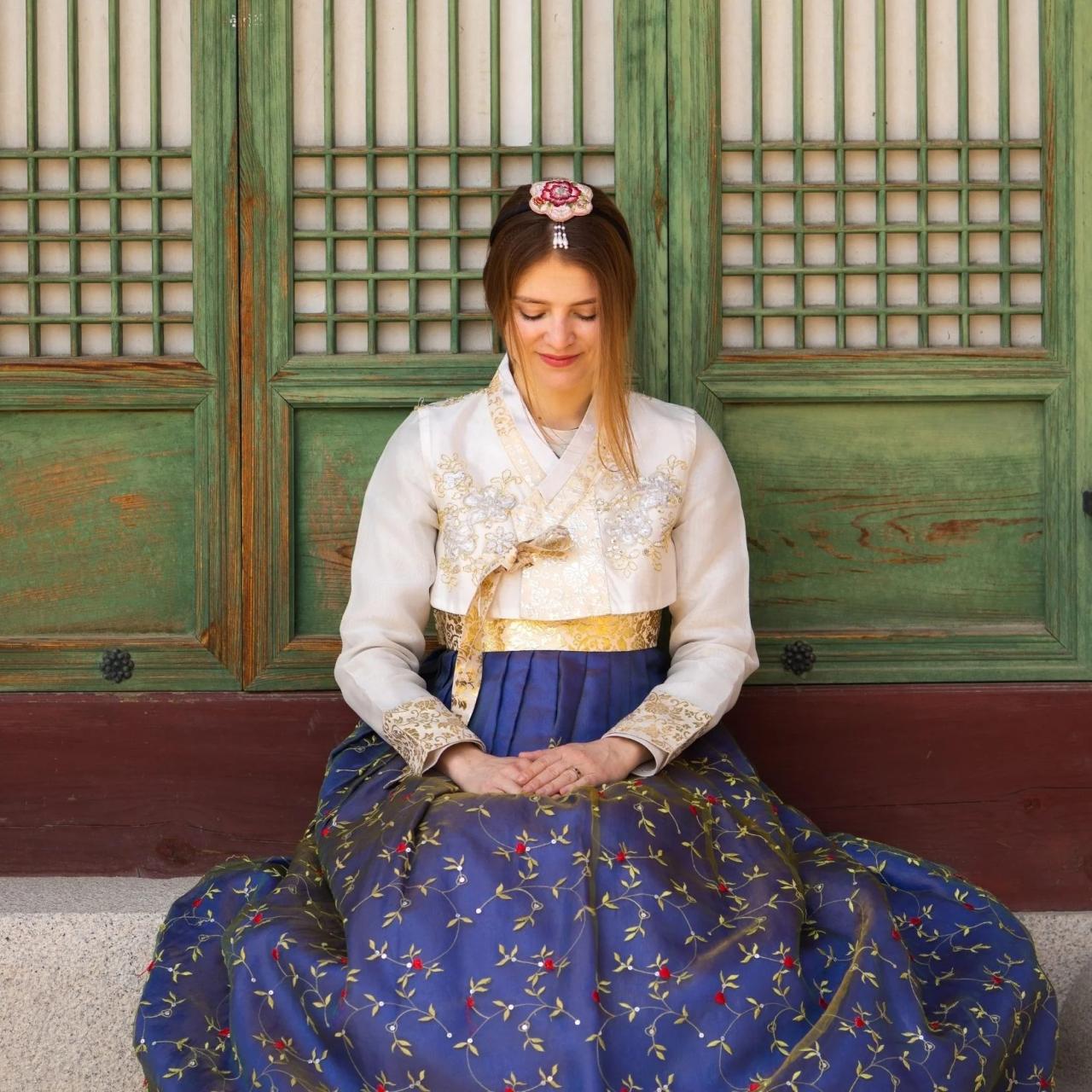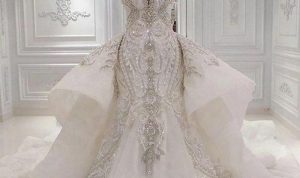A History of the Hanbok: Korea’s Traditional Wedding Dress
Korean traditional wedding dress – The Hanbok, Korea’s traditional clothing, holds a significant place in Korean culture, particularly within the context of weddings. Its evolution reflects centuries of social, political, and artistic change, transforming from simple, practical garments to the elaborate ensembles we see today. This exploration delves into the rich history, symbolism, regional variations, and modern interpretations of the Hanbok wedding attire.
Historical Development and Social Significance of the Hanbok
The earliest forms of the Hanbok were practical garments, differing significantly from the ornate wedding attire seen in modern times. Over the Joseon dynasty (1392-1897), the Hanbok’s design evolved, becoming more elaborate and reflecting social hierarchies. The use of specific fabrics, colors, and embellishments indicated a wearer’s social standing and marital status. For instance, vibrant colors and luxurious fabrics like silk were reserved for the elite, while simpler materials and muted tones were worn by the common people.
The shape and silhouette of the Hanbok also changed subtly over the centuries, reflecting evolving aesthetic preferences.
The bride’s Hanbok traditionally featured more elaborate embellishments and brighter colors than the groom’s, signifying her purity and beauty as well as the family’s status. The groom’s attire, while still elegant, was generally simpler, reflecting a more understated elegance.
Key Components and Symbolism of the Wedding Hanbok

Source: allkpop.com
The traditional Korean wedding Hanbok comprises several key components, each carrying symbolic weight. Understanding these elements provides insight into the rich cultural significance of the attire.
| Garment Type | Bride’s Color Symbolism | Bride’s Fabric | Bride’s Embellishments |
|---|---|---|---|
| Jeogori (jacket) | Red (good fortune, happiness), Pink (youth, purity) | Silk, often richly embroidered | Intricate embroidery, often featuring auspicious symbols like cranes or peonies |
| Chima (skirt) | Red, Pink, or a combination | Silk, often layered | Minimal embellishment compared to the jeogori |
| Groom’s Jeogori | Deep Blue (masculinity, dignity), Dark Green (longevity) | Silk or high-quality cotton | Subtle embroidery, often geometric patterns |
| Baji (trousers) | Matching the Jeogori | Same as Jeogori | Minimal embellishment |
| Accessories | Wonsam (large overcoat), headpieces, jewelry | Variety depending on the piece | Precious stones, gold, and intricate designs |
Regional Variations in Hanbok Design
While the basic structure of the Hanbok remains consistent across Korea, regional variations exist in design, color palettes, and embroidery techniques. These differences reflect the unique cultural nuances of each area.
- Gyeonggi-do: Known for its elegant and sophisticated designs, often featuring delicate embroidery and pastel colors.
- Jeolla-do: Characterized by vibrant colors, bold patterns, and intricate embroidery, reflecting the region’s rich cultural heritage.
- Gangwon-do: Often features simpler designs with a focus on natural dyes and locally sourced fabrics.
- Jeju-do: Unique designs influenced by the island’s distinct environment and culture, often incorporating elements from nature.
Modern Interpretations of the Traditional Wedding Hanbok, Korean traditional wedding dress
Contemporary designers are creatively reinterpreting the traditional Hanbok for modern weddings, blending classic elements with contemporary aesthetics. This results in unique and stylish garments that retain the essence of the traditional design while incorporating modern sensibilities.
- Modern Minimalist Hanbok: A streamlined silhouette in a soft pastel color (like a light lavender or mint green) made of high-quality silk or a luxurious blend. Minimal embellishment, focusing on the clean lines of the garment. This design retains the elegance of the traditional Hanbok while simplifying it for a contemporary setting.
- Hanbok with Asymmetrical Details: A traditional Hanbok silhouette reimagined with an asymmetrical neckline or sleeve length. The use of bold, contrasting colors (like deep emerald and blush pink) creates a visually striking yet sophisticated look. This design plays with traditional elements while adding a touch of unexpected modernity.
- Modern Fusion Hanbok: Combining traditional Hanbok elements with modern tailoring techniques. This might involve using modern fabrics, such as crepe or chiffon, while maintaining the basic silhouette and incorporating traditional embroidery in unexpected places.
The Hanbok’s Role in Modern Korean Wedding Ceremonies

Source: shopify.com
The Hanbok remains a significant part of many modern Korean wedding ceremonies, albeit with variations compared to traditional practices. While some couples opt for Western-style attire, others choose to incorporate the Hanbok, either partially or fully, into their celebrations.
The Hanbok is often worn during the traditional wedding rituals, such as the pyebaek (a post-wedding ceremony where the newlyweds greet their elders), and during the photographs. The bride and groom, adorned in their Hanbok, exude grace and elegance, embodying the rich cultural heritage of Korea. The setting might be a traditional Korean house or a beautifully decorated venue reflecting traditional aesthetics.
The couple’s posture is typically upright and respectful, reflecting their reverence for tradition and their commitment to one another. The atmosphere is often filled with joy, warmth, and a sense of cultural pride.
Essential FAQs: Korean Traditional Wedding Dress
What materials are traditionally used in a Korean wedding Hanbok?
Traditionally, high-quality silks, ramie, and hemp were used. The choice often reflected the wearer’s social status.
The vibrant hues and intricate details of a Korean traditional wedding dress, or Hanbok, are truly captivating. Considering the formality of such an occasion, choosing appropriate attire for a guest is crucial; perhaps you’d find inspiration browsing options for a church wedding guest dress , as the elegance required shares similarities. Ultimately, both emphasize respectful and stylish attire, though the Hanbok’s unique aesthetic stands apart.
Are there specific hairstyles associated with the Korean wedding Hanbok?
Yes, elaborate hairstyles, often adorned with ornate accessories like jeweled hairpins and combs, are customary.
How long does it typically take to create a traditional Hanbok?
The time varies greatly depending on the intricacy of the design and embellishments, but it can take several weeks or even months.
Where can I find a modern Hanbok designer?
Many contemporary designers specialize in Hanbok; searching online or contacting Korean cultural centers can provide resources.

